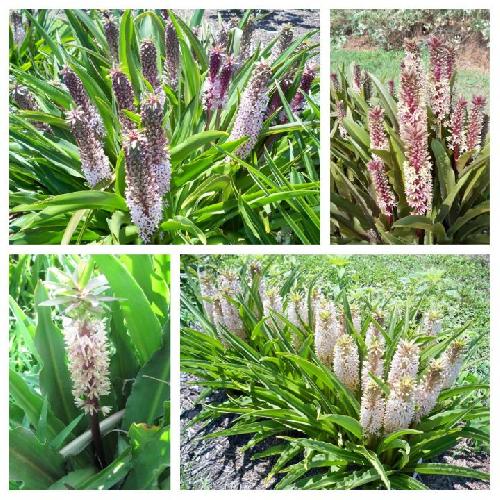RALEIGH, NC - The authors of a new study say that bringing new types of cut flowers to market is good for consumers and the floral industry. Alicain Carlson and John Dole published a study in the October 2015 issue of HortTechnology that can help pineapple lilies gain favor with cut flower growers, and may spark interest among floral consumers.
Pineapple lily is named for the inflorescence that is lined with star-shaped florets topped with a tufts of bracts, making the flower resemble a pineapple. Blooms can last for more than a month in a vase and even longer on the plant. Carlson and Dole say pineapple lily works well as a cut flower, but more information is needed on proper production methods. "Growers may have access to different production environments depending on their individual operations," they explained. "It is important to understand the differences these production environments will have on the productivity and quality of cut stems."
To determine the effects of bulb storage temperature and duration, production environment, planting density, and forcing temperatures, the scientists planted bulbs of 'Coral', 'Cream', 'Sparkling Burgundy', and 'Lavender' pineapple lily in either a double-layered, polyethylene-covered greenhouse or loamy clay soil field beds at North Carolina State University in Raleigh. Bulbs in both production environments were planted at a low density of six bulbs per crate or a high density of 12 bulbs per crate.
 Pineapple lily plants were grown in field beds to determine ideal forcing conditions. Varieties in the study were (top left to bottom right): 'Lavender', 'Sparkling Burgundy', 'Cream', and 'Coral'. Credit: Photos courtesy of Alicain S. Carlson.
Pineapple lily plants were grown in field beds to determine ideal forcing conditions. Varieties in the study were (top left to bottom right): 'Lavender', 'Sparkling Burgundy', 'Cream', and 'Coral'. Credit: Photos courtesy of Alicain S. Carlson.
The researchers assessed pineapple lily stem length and caliper, and number of marketable (greater than 30 cm in length and with no abnormal development) stems. They found that both stem length and stem caliper were greater in lilies grown in the greenhouse. Flowering depended greatly on temperature; bulbs in the 18 °C production temperature emerged faster and flowered sooner than those grown in cooler temperatures.
"We found that all the pineapple lily cultivars in the study could be grown in either the open field or greenhouse and produce marketable stems," the authors noted. "This allows growers versatility in production environment and planting density to suit individual needs and still produce marketable stems."
Dole and Carlson recommend a low planting density for bulbs used for multiple seasons to allow for subsequent years growth of bulblets. "If the bulbs are grown for just one season, a high planting density has no adverse effects," they said.
The authors recommended that growers leave pineapple lily bulbs in substrate from season to season and cold store for at least 47 days, or dry store in a greenhouse until ready to force. They noted that warmer forcing temperatures are ideal to accelerate flowering of pineapple lily.
source: American Society for Horticultural Science